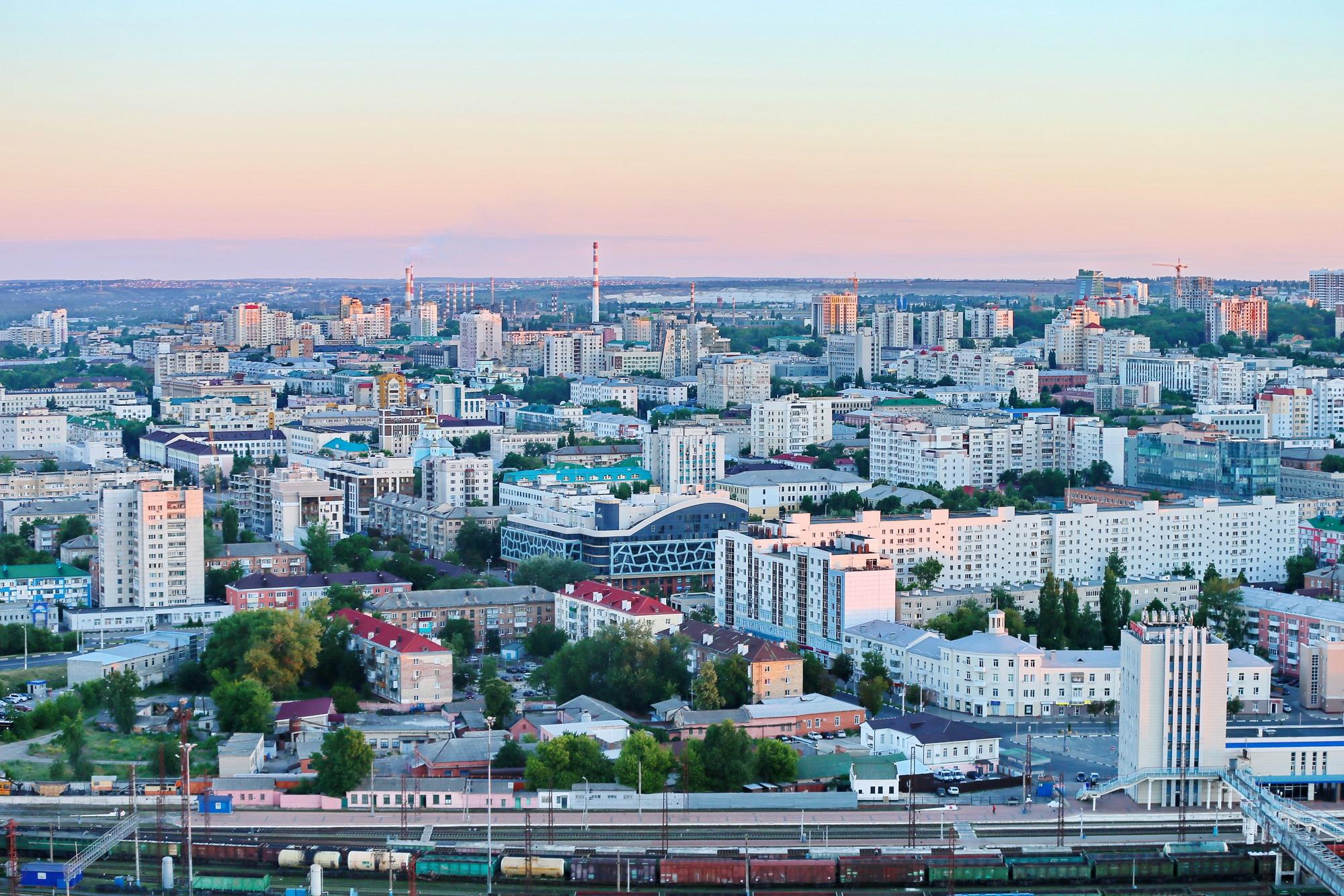
Deutsch-Chinesische Enzyklopädie, 德汉百科
 Russia
Russia

Das Bajan (russisch баян, IPA: bɐˈjan) ist die osteuropäische Form des Chromatischen Knopfakkordeons. Unterschiede zum Akkordeon bestehen in der Ausführung des Gehäuses und der Art der Stimmplatten. Die Stimmzungen eines Bajans sind üblicherweise in großen Gruppen zusammen auf einer Metallgrundplatte montiert.
巴扬(俄语баян)是俄罗斯的民族乐器。巴扬手风琴具有指法简便,音域宽广、体积小、易掌握等特点,在国外,尤其是欧洲非常盛行。这个名字来源于俄罗斯的一位名叫巴扬的演奏家,他当时因为演奏古老的手风琴而闻名。古手风琴经过无数次改良而成为我们所见到的这种键钮式自由低音手风琴,1905年圣彼得堡生产出第一台键钮式手风琴,人们为了纪念他而将这种琴命名为“巴扬”。






 Architecture
Architecture
 Neo-Byzantine architecture
Neo-Byzantine architecture
 Renaissance architecture
Renaissance architecture
 Russian Renaissance
Russian Renaissance

 History
History
 M 1500 - 2000 AD
M 1500 - 2000 AD

 Religion
Religion
 Russia
Russia

 World Heritage
World Heritage

聖ワシリイ大聖堂(露:Собор Василия Блаженного)はロシアの首都、モスクワの赤の広場に立つロシア正教会の大聖堂。正式名称は「堀の生神女庇護大聖堂」(Собор Покрова, что на Рву、詳細は#名称・記憶を参照)。
「聖ワシリー大聖堂」「聖ヴァシーリー大聖堂」「聖ワシーリー寺院」とも日本では表記される。
1551年から1560年にかけて、イヴァン4世(雷帝)が、カザン・ハーンを捕虜とし勝利したことを記念して建立した。ロシアの聖堂でもっとも美しい建物のひとつと言われる。1990年にユネスコの世界遺産に登録された。
ゲームソフト等で有名なテトリスでは、ロシア文化をイメージとした背景や音楽等がよく用いられており、聖ワシリイ大聖堂もしばしば背景画像やパッケージとして使われている。
「クレムリンの聖ワシリイ大聖堂」といった説明がされることもあるが、大聖堂はクレムリンの城壁の内側には位置していないため誤りである。聖ワシリイ大聖堂が位置する赤の広場はクレムリンの城壁の外側にある。
The Cathedral of Vasily the Blessed (Russian: собо́р Васи́лия Блаже́нного, Sobor Vasiliya Blazhennogo), commonly known as Saint Basil's Cathedral, is an Orthodox church in Red Square of Moscow, and is one of the most popular cultural symbols of Russia. The building, now a museum, is officially known as the Cathedral of the Intercession of the Most Holy Theotokos on the Moat, or Pokrovsky Cathedral.[5] It was built from 1555 to 1561 on orders from Ivan the Terrible and commemorates the capture of Kazan and Astrakhan. It was the city's tallest building until the completion of the Ivan the Great Bell Tower in 1600.[6]
The original building, known as Trinity Church and later Trinity Cathedral, contained eight chapels arranged around a ninth, central chapel dedicated to the Intercession; a tenth chapel was erected in 1588 over the grave of the venerated local saint Vasily (Basil). In the 16th and 17th centuries, the church, perceived (as with all churches in Byzantine Christianity) as the earthly symbol of the Heavenly City,[7] was popularly known as the "Jerusalem" and served as an allegory of the Jerusalem Temple in the annual Palm Sunday parade attended by the Patriarch of Moscow and the Tsar.[8]
The cathedral has nine domes (each one corresponding to a different church) and is shaped like the flame of a bonfire rising into the sky,[9] a design that has no parallel in Russian architecture. Dmitry Shvidkovsky, in his book Russian Architecture and the West, states that "it is like no other Russian building. Nothing similar can be found in the entire millennium of Byzantine tradition from the fifth to the fifteenth century ... a strangeness that astonishes by its unexpectedness, complexity and dazzling interleaving of the manifold details of its design."[10] The cathedral foreshadowed the climax of Russian national architecture in the 17th century.[11]
La cattedrale dell'Intercessione della Madre di Gesù sul Fossato, popolarmente nota come cattedrale di San Basilio, è una cattedrale della Chiesa ortodossa russa eretta sulla Piazza Rossa di Mosca tra il 1555 e il 1561 (XVI). Costruita per volontà di Ivan IV di Russia per commemorare la presa di Kazan' e Astrachan', essa rappresenta il centro geometrico della città e il fulcro della sua crescita già dal XIV secolo.[1] È stato il più alto edificio della città di Mosca fino al completamento della Grande Torre Campanaria di Ivan il Grande, avvenuto nel 1600.[2]
L'edificio originale, noto come la chiesa della Trinità e successivamente come cattedrale della Trinità, constava di otto chiese laterali distribuite intorno alla nona, centrale, chiesa dell'Intercessione; la decima chiesa venne eretta nel 1588 sopra la tomba del venerato stolto Basilio il Benedetto. Durante il XVI e il XVII secolo la cattedrale, percepita come il simbolo in terra della Città celeste,[3] era popolarmente conosciuta come Gerusalemme e rappresentava un'allegoria del Tempio di Gerusalemme durante l'annuale parata della Domenica delle Palme capeggiata dal Patriarca di Mosca e dallo zar.[4]
Il disegno dell'edificio, la cui forma ricorda «le fiamme di un falò che sale verso il cielo»,[5] non ha analoghi nell'architettura russa: «Non è come nessun altro edificio russo. Niente di simile può essere trovato nell'intero millennio di tradizione bizantina intercorso tra il V e il XV secolo… una stranezza che lascia attoniti per l'imprevedibilità, la complessità e l'abbagliante fioritura dei dettagli riprodotti nel suo disegno.»[6] La cattedrale anticipò la climax dell'architettura nazionale russa del XVII secolo,[7] ma non è mai stata riprodotta direttamente.
La cattedrale ha operato come divisione del Museo Storico di Stato già dal 1928. Venne completamente secolarizzata nel 1929 e, al 2009, risulta ancora proprietà della Federazione russa. La cattedrale è inclusa dal 1990 come Patrimonio dell'umanità nella lista UNESCO, insieme con il Cremlino di Mosca.[8]
La Catedral de la Intercesión de la Santísima Virgen en el Montículo (en ruso Собор Покрова Пресвятой Богородицы, что на Рву, Sobor Pokrová Presvyatoy Bogoróditsy, chto na Rvu), más conocida como Catedral de San Basilio, es un templo ortodoxo localizado en la Plaza Roja de la ciudad de Moscú, Rusia. Es mundialmente famosa por sus cúpulas en forma de bulbo. A pesar de lo que se suele pensar popularmente, la Catedral de San Basilio no es ni la sede del Patriarca Ortodoxo de Moscú, ni la catedral principal de la capital rusa, pues en ambos casos es la Catedral de Cristo Salvador. Como parte de la Plaza Roja, la catedral de San Basilio fue incluida desde 1990, junto con el conjunto del Kremlin, en la lista de Patrimonio de la Humanidad de Unesco.2
La construcción de la catedral fue ordenada por el zar Iván el Terrible para conmemorar la conquista del Kanato de Kazán, y se realizó entre 1555 y 1561. En 1588, el zar Teodoro I de Rusia mandó que se agregara una nueva capilla en el lado este de la construcción, sobre la tumba de San Basilio el Bendito, santo por el cual se empezó a llamar popularmente la catedral.
San Basilio se encuentra en el extremo sureste de la Plaza Roja, justo frente a la Torre Spásskaya (la Torre del Salvador) del Kremlin y la iglesia de San Juan Bautista en Dyákovo.
En un jardín frente a la iglesia se levanta el Monumento a Minin y Pozharsky, una estatua de bronce en honor a Dmitri Pozharski y Kuzmá Minin, quienes reunieron voluntarios para el ejército que luchó contra los invasores polacos durante el conocido como Período Tumultuoso.
El concepto inicial era construir un grupo de capillas, dedicadas a cada uno de los santos en cuyo día el zar ganó una batalla, pero la construcción de una torre central unifica estos espacios en una sola catedral.
La leyenda dice que el zar Iván dejó ciego al arquitecto Póstnik Yákovlev para evitar que proyectara una construcción que pudiera superar a esta, aunque parece claro que no se trata más que de una fabulación, ya que Yákovlev participó, pasados unos años, en la construcción del Kremlin de Kazán.
La catedral de San Basilio no debe confundirse con el Kremlin de Moscú, que está situado a su lado en la Plaza Roja, y por tanto no forma parte de él. Aun así, muchos medios confunden ambas construcciones.
Собо́р Покрова́ Пресвято́й Богоро́дицы, что на Рву (Покро́вский собо́р, собо́р Покрова́ на Рву, разговорное — собо́р (храм) Васи́лия Блаже́нного) — православный храм на Красной площади в Москве, памятник русской архитектуры. Строительство собора велось с 1555 по 1561 год[1][2].
Собор объединяет одиннадцать церквей (приделов), часть из которых освящена в честь святых, дни памяти которых пришлись на решающие бои за Казань[3]. Центральная церковь сооружена в честь Покрова Богородицы, вокруг которой группируются отдельные церкви в честь: Святой Троицы, Входа Господня в Иерусалим, Николы Великорецкого, Трёх Патриархов: Александра, Иоанна и Павла Нового, Григория Армянского, Киприана и Иустины, Александра Свирского и Варлаама Хутынского, размещённые на одном основании-подклете, а также придел в честь Василия Блаженного[4][5], по имени которого храм получил второе, более известное название, и церковь Иоанна Блаженного, вновь открытая после длительного запустения в ноябре 2018 года[6].
В названии собора упомянут ров, проходивший вдоль Кремлёвской стены и служивший оборонительным укреплением (Алевизов ров), его глубина была около 13 метров, а ширина — около 36 метров[7][8].
Собор входит в российский список объектов Всемирного наследия ЮНЕСКО и является филиалом Государственного исторического музея[9].





 Belgium
Belgium
 Amber Road
Amber Road
 Denmark
Denmark
 Germany
Germany
 Estonia
Estonia
 France
France
 Greece
Greece
 Italy
Italy
 Latvia
Latvia
 Lithuania
Lithuania
 Netherlands
Netherlands
 Austria
Austria
 Poland
Poland
 Russia
Russia
 Switzerland
Switzerland
 Slovakia
Slovakia
 Slovenia
Slovenia
 Spain
Spain
 Czech Republic
Czech Republic
 Hungary
Hungary

琥珀之路(英语:Amber Road)是一条古代运输琥珀的贸易道路,这条水路和陆路结合而成的通商道路,从欧洲北部的北海和波罗的海通往欧洲南部的地中海,连结了欧洲的多个重要城市,维持了多个世纪。
在公元前后的很长一段时间,琥珀作为装饰品中的重要组成部分,被从北海和波罗的海海岸的产地,经由维斯瓦河和第聂伯河运输到意大利、希腊、黑海和埃及。琥珀之路连结了琥珀的产地和在欧洲、中东地区和远东地区的消费地,并经由另一条通商道路丝绸之路继续通往亚洲。
Als Bernsteinstraße werden verschiedene Handelswege des Altertums (Altstraßen) bezeichnet, auf denen (unter anderem) Bernstein von der Nord- und Ostsee nach Süden in den Mittelmeerraum gelangte. Genau genommen handelt es sich nicht um eine Straße, sondern um unabhängige Handelswege, die für verschiedene Handelsgüter genutzt wurden. Die Bezeichnung „Bernsteinstraße“ tritt etwa ab dem Ende des 18. Jahrhunderts auf und hat in antiken Quellen keine Entsprechung.


 Energy resource
Energy resource

 Energy resource
Energy resource
 Hydroelectric power plants
Hydroelectric power plants

 Energy resource
Energy resource
 *Electrical power
*Electrical power
 Erneuerbare Energie
Erneuerbare Energie
 Hydropower
Hydropower
 Russia
Russia

 Musical instrument
Musical instrument
 Eat and Drink
Eat and Drink
 Companies
Companies
 Ships and Nautics
Ships and Nautics
 Geography
Geography
 Amur Oblast
Amur Oblast
 Music
Music
 Performing Arts
Performing Arts